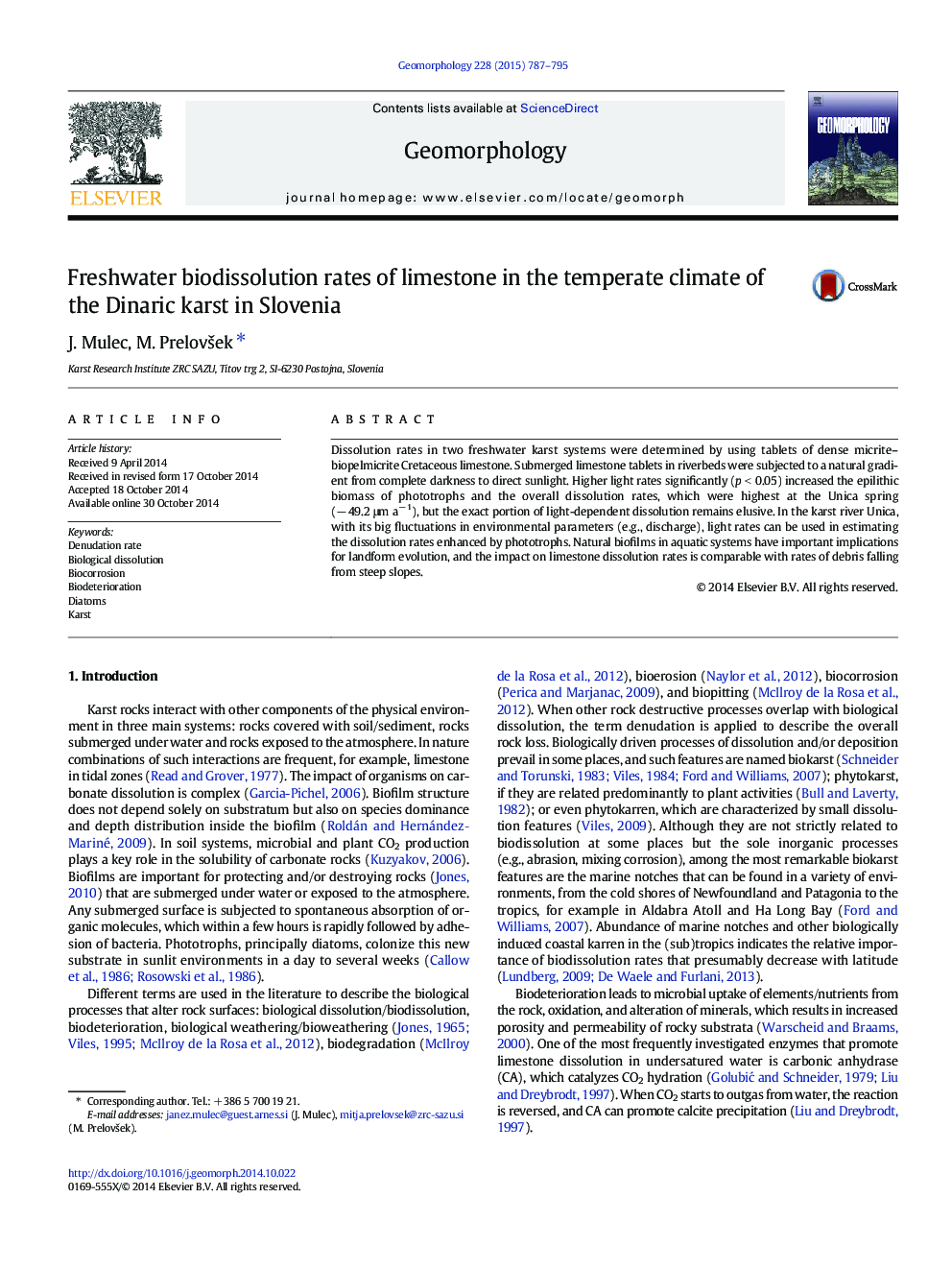| Article ID | Journal | Published Year | Pages | File Type |
|---|---|---|---|---|
| 6432347 | Geomorphology | 2015 | 9 Pages |
â¢Biodissolution rates of limestone were studied in the natural environment.â¢Illumination intensity has a principal effect on increased biodissolution.â¢Freshwater biodissolution can be responsible for over 90% of overall dissolution.â¢High biodissolution rates are not characteristic of all freshwater environments.
Dissolution rates in two freshwater karst systems were determined by using tablets of dense micrite-biopelmicrite Cretaceous limestone. Submerged limestone tablets in riverbeds were subjected to a natural gradient from complete darkness to direct sunlight. Higher light rates significantly (p < 0.05) increased the epilithic biomass of phototrophs and the overall dissolution rates, which were highest at the Unica spring (â 49.2 μm aâ 1), but the exact portion of light-dependent dissolution remains elusive. In the karst river Unica, with its big fluctuations in environmental parameters (e.g., discharge), light rates can be used in estimating the dissolution rates enhanced by phototrophs. Natural biofilms in aquatic systems have important implications for landform evolution, and the impact on limestone dissolution rates is comparable with rates of debris falling from steep slopes.
